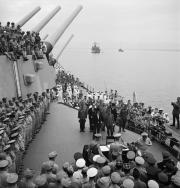Japan, 1945 to the Present
UNIT OVERVIEW
Japan, 1945 to the Present
Unit Goals.
1. Understand the complex course of Japan’s economic and political development from the occupation through the “Lost Decade,” as well as the distinctive features of Japan’s postwar and contemporary political economy.
2. Understand Japan’s place in the global order since 1945, with particular emphasis on the pivotal U.S.-Japan relationship, Japan’s relations with its Asian neighbors, and the rise of Japanese “soft power” around the world.
3. Understand how the rapid economic and political changes of postwar and contemporary Japan have shaped the lives of the Japanese people, social structures and institutions, popular culture, notions of national identity, and attitudes toward topics like nature and the environment.
Bibliographic Note.
Three exceptional recent textbooks on the history of modern Japan are Andrew Gordon, A Modern History of Japan: From Tokugawa Times to the Present (New York: Oxford University Press, 2003), Marius Jansen, The Making of Modern Japan (Cambridge: Harvard University Press, 2000), and James McClain, Japan, A Modern History (New York: W.W. Norton, 2002). Each of these volumes presents a thorough overview of the major trends and events in Japan’s postwar history, with the usual textbook emphasis on political, economic, and social topics. An innovative alternative is James Huffman, Modern Japan: A History in Documents (New York: Oxford University Press, 2004) which seeks to introduce Japanese history through a series of short passages (250-500 words) from appropriate primary sources.
Two excellent sources of translated primary sources are David J. Lu, ed., Japan: A Documentary History, Volume II The Late Tokugawa Period to the Present (Armonk, NY: M.E. Sharpe, 1997) and the monumental Wm. Theodore deBary, Carol Gluck, and Arthur E. Tiedemann, eds., Sources of Japanese Tradition, Volume II 1600-2000, 2nd ed. (New York: Columbia University Press, 2005).


